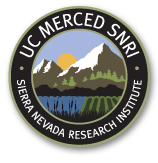Wildfire
Explore wildfire scenario projections for area burned and estimated decadal wildfire probabilities for California.
Data Sources

Wildfire Simulations for California’s Fourth Climate Change Assessment
University of California, Merced
Wildfire scenario projections produced by Dr. LeRoy Westerling at the University of California Merced, using a statistical model based on historical data of climate, vegetation, population density, and large (>400 ha) fire history coupled with regionally downscaled LOCA climate projections. Models of large wildfire presence, number, and size were developed at monthly time scales from 1953 through 2099 under a range of projected climate scenarios in addition to land use and population changes based on low, medium, and high population growth scenarios. Locations that are outside the combined fire state and federal protection responsibility areas were excluded from the analysis. These “No Data” areas are generally in landscapes that have been converted to intensive human use, including urban and agricultural areas.
The wildfire projections consist of 100 simulations each for 4 models, 2 emissions scenarios, 3 population growth scenarios and 10 spatially stochastic land use scenarios. These simulations were aggregated over each grid cell to produce the annual and monthly average annual area burned products. Details are described in Westerling, 2018.

Wildfire Simulations Derived Products
Geospatial Innovation Facility - University of California, Berkeley
Decadal wildfire probability estimated from wildfire scenario projections produced by Dr. LeRoy Westerling at the University of California Merced (Westerling, 2018) using the methodology described in Dale, 2018. Decadal fire probability means the probability that there will be one or more fires in that cell during the decade.
The wildfire projections consist of 100 simulations each for 4 models, 2 emissions scenarios, 3 population growth scenarios and 10 land use scenarios. We took 1000 simulations (100 simulations x 10 spatially stochastic land use scenarios) for each model, emission scenario, population growth scenario combination and coded the fire presence or absence for each grid cell and year as 1 or 0. The fire occurrence probability for each grid cell and year was calculated by dividing the total fire presence number by 1000. The decadal fire probability was calculated by integrating the fire occurrence probabilities over a 10 year period.